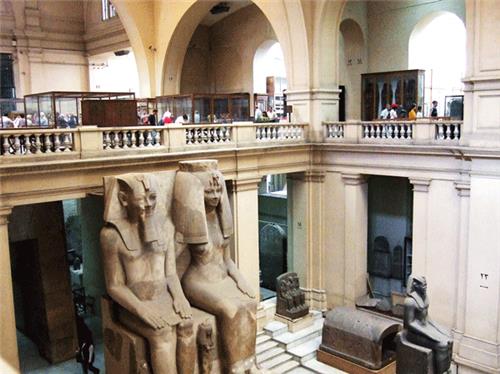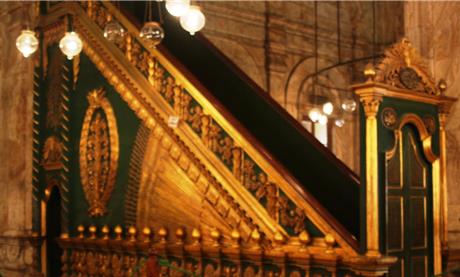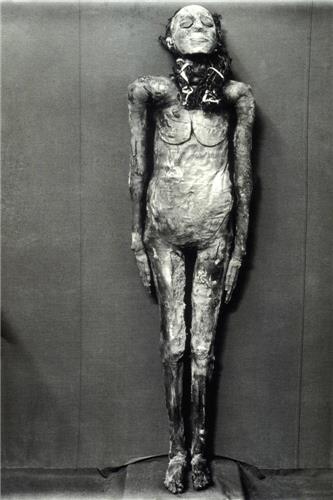The Getty Center is located at 1200 Getty Center Drive the Avenue (Getty Center) of the Brentwood neighborhood of Los Angeles, California (USA).

The Getty Center is located in Los Angeles (USA), is a kind of campus meets the J. Paul Getty Museum, the Getty Foundation, Research Institute, Conservation Institute and the Getty Trust.
The Getty Center is a private foundation dedicated to the arts and humanities. It has an important collection of European and American art. Develop a large number of exhibitions, cultural and educational activities around their pieces.
The origin of the institution dates back to 1953 when J. Paul Getty set Malibu home of a small museum of Greek and Roman antiquities, French furniture s. XVIII and European painting. The next venue was inaugurated in 1974 to be a Roman-style villa. inspired by the historical villas of Pompeii and Herculaneum. The current site was built in 1997 on a hill in Los Angeles as a major cultural complex
Most surface goes to Getty Center art museum, divided into several pavilions, the first buildings are occupied by the art of painting and the other buildings are to exhibits that change over time.
The Getty Center is a kind of campus that meets the Museum J. Paul Getty, the Getty Foundation, a research institute, a Conservation Institute and the Getty Trust, plus an auditorium facilities and several gardens.
The center is named after the American businessman and philanthropist Jean Paul Getty, who provided substantial funds, their private art collection and a mansion in Pacific Palisades (Malibu, California) to a trust named J. Paul Getty Trust. Had collected art since the 1930s. In this mansion was opened in 1974, the Museum J. Paul Getty Museum now identified as J. Paul Getty Malibu and its official website more colloquially called Getty Villa. It features Greco-Roman art funds, in line with its architectural style inspired by ancient villas of Pompeii and Herculaneum.
The construction of the Getty Center in Los Angeles, designed by Richard Meier and opened in 1997, marked the transfer of almost all art collections, save the pieces remaining Greek and Roman villa in Malibu.
Access to the Getty Center is free, the only fee is the public parking for visitors is $ 10 per car.

 The French expedition brought more than 165 scholars and scientists in all specialties to study all aspects of Egyptian life, geography, zoology, geology, history, religion, traditions, laws etc. Those scientists showed great desire and enthusiasm to study the entire Egyptian, especially history and ancient monuments. Undoubtedly, the charm and grandeur of these monuments attracted many of them to go almost all regions of Egyptian territory especially in Upper Egypt. The ancient Egyptian monuments were the largest field of study and research for some of these historians and scholars. A few years later came the work of French painter and historian Vivian Dinon who walked enchanted by the wonders especially in Upper Egypt-Egypt, and finally his work resulted in a valuable book entitled “Travel to the Lower and Upper Egypt” published in Paris in 1803.
The French expedition brought more than 165 scholars and scientists in all specialties to study all aspects of Egyptian life, geography, zoology, geology, history, religion, traditions, laws etc. Those scientists showed great desire and enthusiasm to study the entire Egyptian, especially history and ancient monuments. Undoubtedly, the charm and grandeur of these monuments attracted many of them to go almost all regions of Egyptian territory especially in Upper Egypt. The ancient Egyptian monuments were the largest field of study and research for some of these historians and scholars. A few years later came the work of French painter and historian Vivian Dinon who walked enchanted by the wonders especially in Upper Egypt-Egypt, and finally his work resulted in a valuable book entitled “Travel to the Lower and Upper Egypt” published in Paris in 1803.  Thanks to Mariette Pacha (1821-1881) precurso the French Egyptologist who established the Egyptian Antiquities Service of first. Mariette in 1857 founded the first museum in the neighbourhood of true “Bulaq” in Cairo. It was, indeed, a small building that consisted of four rooms that were exposed objects and antiquities Egyptian . Soon, this museum was badly affected by the flooding of the river Nile, so the objects were transferred to an annex of a royal palace of the Egyptian Ismael Pacha in the city of Giza. now The Egyptian Museum in Cairo was a fruit of great efforts and good desire to preserve the ancient Egyptian artifacts. It was announced an international competition between European companies in the late nineteenth century to build a museum, and won the competition a company from Belgium, so the design of the facade of the museum, unfortunately, is not Egyptian, but was decorated in the style Greco-Roman.
Thanks to Mariette Pacha (1821-1881) precurso the French Egyptologist who established the Egyptian Antiquities Service of first. Mariette in 1857 founded the first museum in the neighbourhood of true “Bulaq” in Cairo. It was, indeed, a small building that consisted of four rooms that were exposed objects and antiquities Egyptian . Soon, this museum was badly affected by the flooding of the river Nile, so the objects were transferred to an annex of a royal palace of the Egyptian Ismael Pacha in the city of Giza. now The Egyptian Museum in Cairo was a fruit of great efforts and good desire to preserve the ancient Egyptian artifacts. It was announced an international competition between European companies in the late nineteenth century to build a museum, and won the competition a company from Belgium, so the design of the facade of the museum, unfortunately, is not Egyptian, but was decorated in the style Greco-Roman.  one of the fundamental divinities who played a large role in Ancient Egyptian Theology. Isis was the goddess of motherhood, loyalty, and magic. Here Isis is a figurative way Greco-Roman and not due to the traditional Egyptian style your wig and your gown also with node that is Roman. Salem addition, the facade was decorated in the Greco-Roman style due to the existence of two Ionic columns, as this type of columns only appeared in the Greco-Roman Period. After all they are some names of ancient Egyptian kings written into medallions. in the garden of the museum, some monuments are scattered here and there, most of them date from the New Kingdom period (1570-1080 a. C approx.). At the west end of the courtyard is a cenotaph, or symbolic tomb built in honor of the memory of the famous figure, the French Egyptologist Mariette Pasha, who was born in 1821 and died in 1881. It is, indeed, a marble cenotaph commemorating this famous figure who came to him the idea of fundção museum that houses and displays the objects found. He wished to be buried in this place, it seems that the cenotaph is only symbolic. The cenotaph is surrounded by busts of famous Egyptologists as one Champollião, Mariette, Selim Hassan, Labibi Habashi, Kamal Selim etc. At the centre of the courtyard is a fountain filled with two kinds of plants, the papyrus and lotus. The papyrus was the symbol of Lower Egypt (North), while the lotus was the symbol of Upper Egypt (the south). The papyrus is found in the swamps of the Delta region in northern Egypt. It is a plant that needs lots of water and measures almost 2 m. high. In Ancient Egyptian papyri were used to make writing paper, sandals, etc. and barges. While the lotus was in the South, and there were two species, the blue lotus and white lotus during the Ancient Egyptian Era.
one of the fundamental divinities who played a large role in Ancient Egyptian Theology. Isis was the goddess of motherhood, loyalty, and magic. Here Isis is a figurative way Greco-Roman and not due to the traditional Egyptian style your wig and your gown also with node that is Roman. Salem addition, the facade was decorated in the Greco-Roman style due to the existence of two Ionic columns, as this type of columns only appeared in the Greco-Roman Period. After all they are some names of ancient Egyptian kings written into medallions. in the garden of the museum, some monuments are scattered here and there, most of them date from the New Kingdom period (1570-1080 a. C approx.). At the west end of the courtyard is a cenotaph, or symbolic tomb built in honor of the memory of the famous figure, the French Egyptologist Mariette Pasha, who was born in 1821 and died in 1881. It is, indeed, a marble cenotaph commemorating this famous figure who came to him the idea of fundção museum that houses and displays the objects found. He wished to be buried in this place, it seems that the cenotaph is only symbolic. The cenotaph is surrounded by busts of famous Egyptologists as one Champollião, Mariette, Selim Hassan, Labibi Habashi, Kamal Selim etc. At the centre of the courtyard is a fountain filled with two kinds of plants, the papyrus and lotus. The papyrus was the symbol of Lower Egypt (North), while the lotus was the symbol of Upper Egypt (the south). The papyrus is found in the swamps of the Delta region in northern Egypt. It is a plant that needs lots of water and measures almost 2 m. high. In Ancient Egyptian papyri were used to make writing paper, sandals, etc. and barges. While the lotus was in the South, and there were two species, the blue lotus and white lotus during the Ancient Egyptian Era.